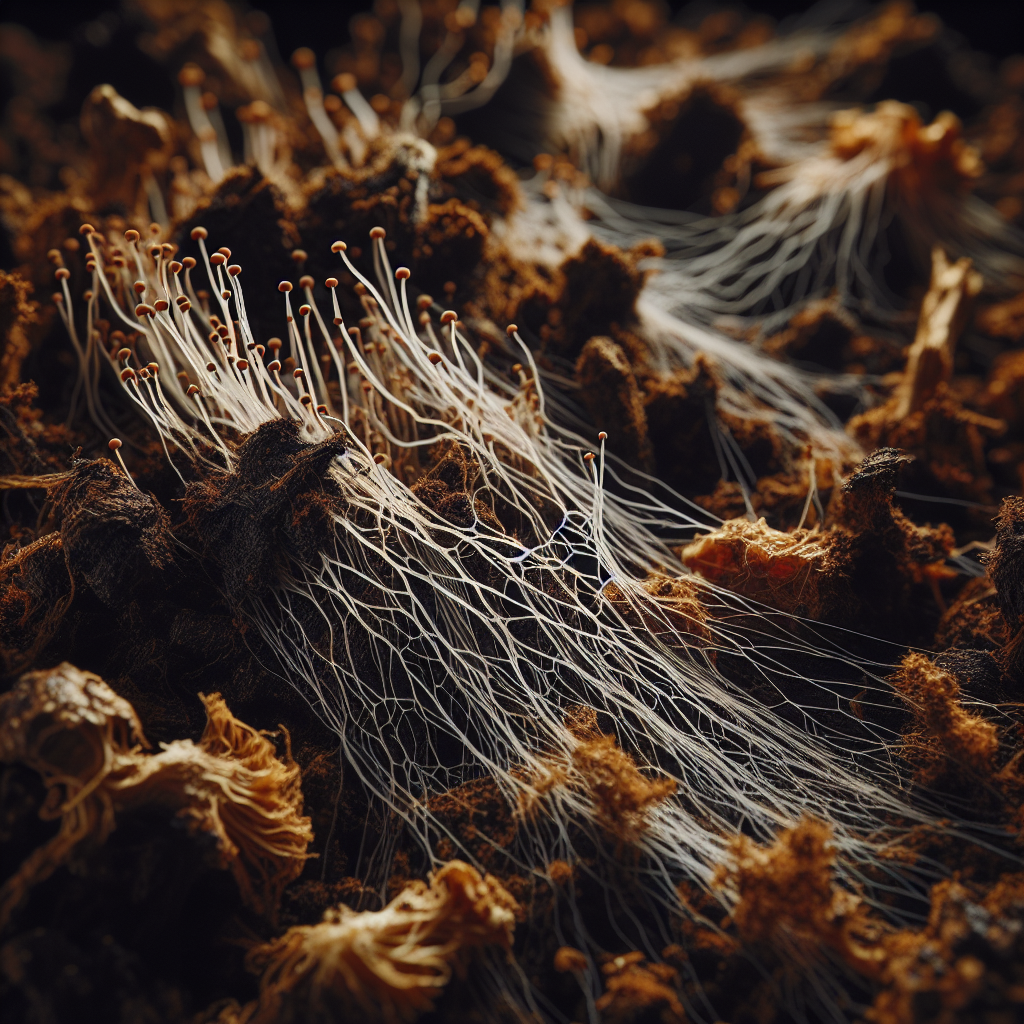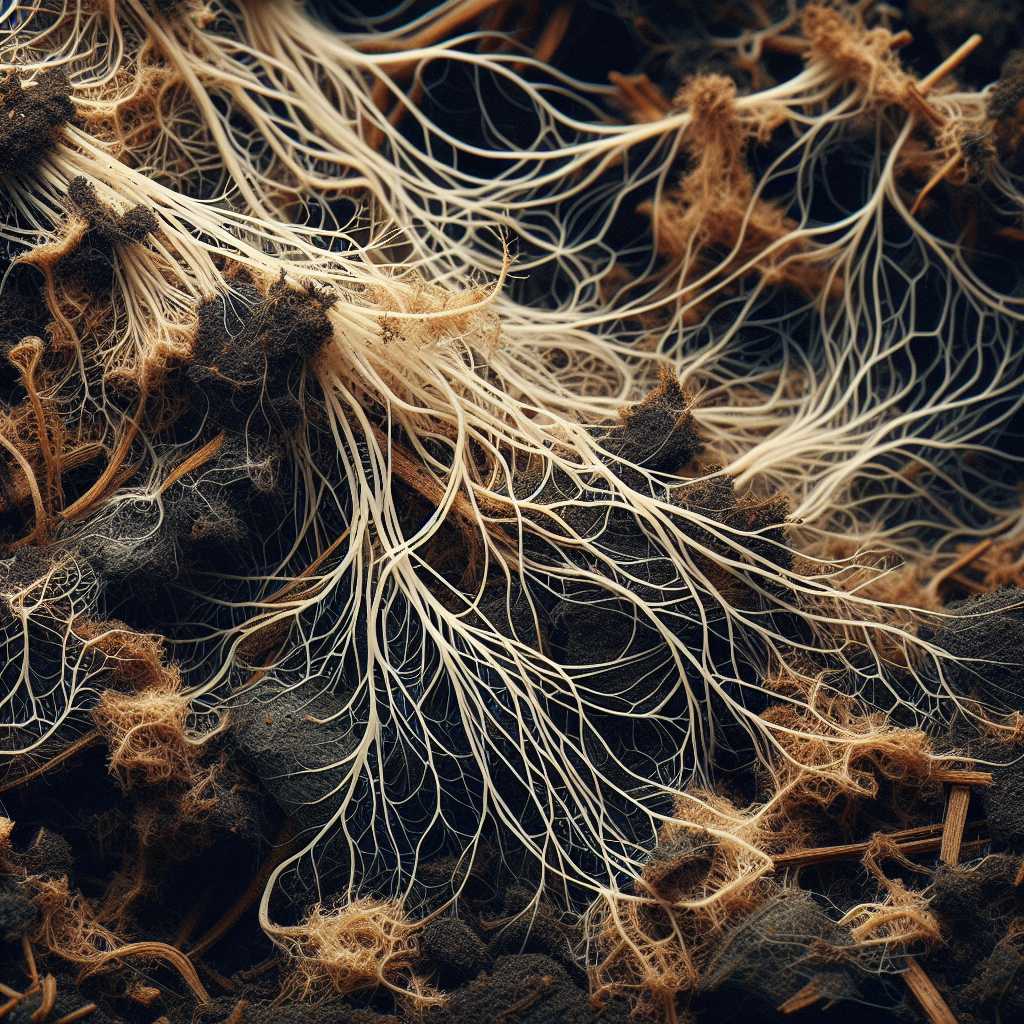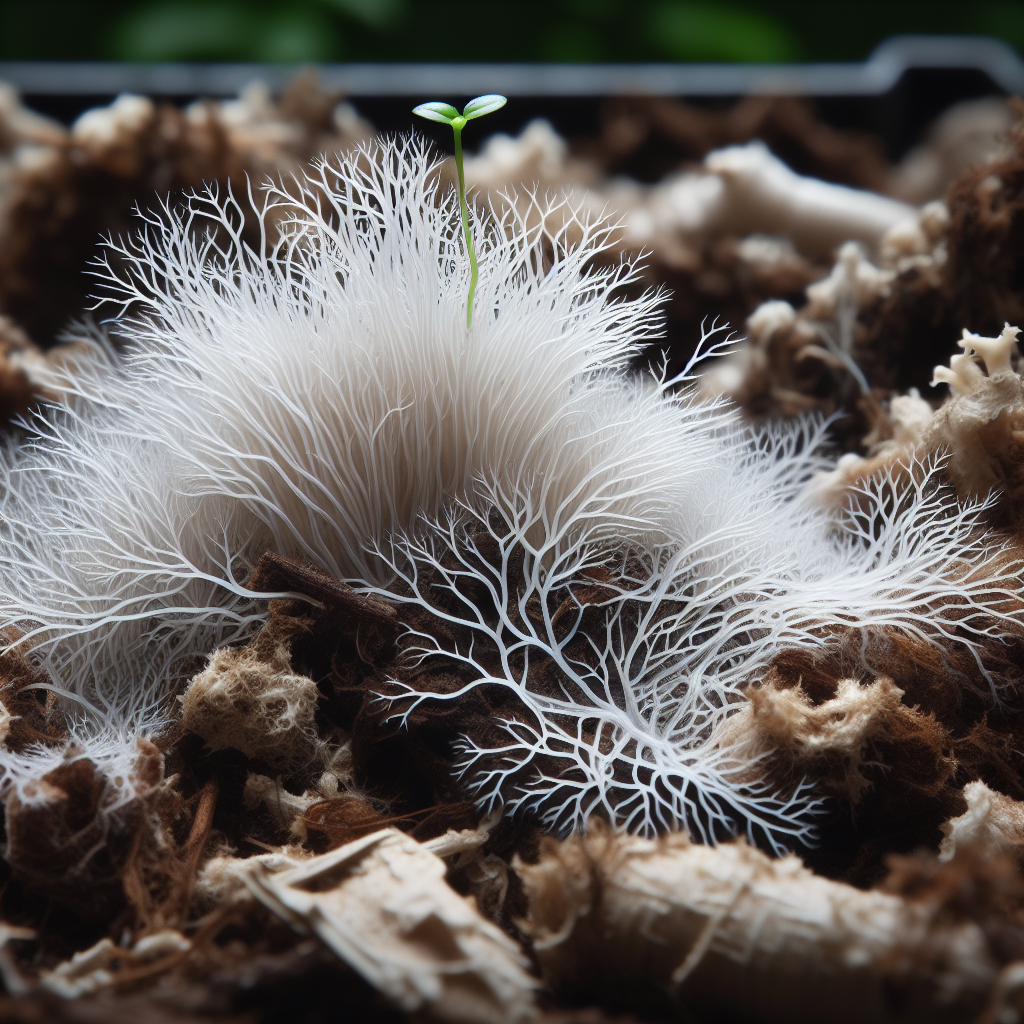Unravel the intricate relationship between mycelium and compost production in this topical discussion. Focusing on the critical significance of mycelium – a fast-growing, vegetative part of fungus – in the process of compost production, this article will empower you with a newfound understanding of the complex interdependence of organic materials in sustainable waste management practices. A well-rounded knowledge of mycelium’s role in composting can ultimately refine your efforts in maintaining your garden or farm effectively while contributing positively to ecological balance.

Understanding Mycelium
Definition of Mycelium
Mycelium can be referred to as the root structure of fungi. It is an underground network of resilient thread-like structures known as hyphae. Each hypha is a tubular cell structure filled with cytoplasm that enables an individual fungus to grow and reproduce.
Growth and Structure of Mycelium
The growth and structure of mycelium greatly depend on the surrounding environment. Mycelium grows by branching out into the surrounding substrate, digesting organic material, and expanding its reach. Their structure, composed of the intertwined mass of hyphae, supports the vegetative growth of a fungus. These robust networks allow fungi to efficiently absorb nutrients from their environment.
Importance of Mycelium in Ecosystem
Mycelium plays an essential role in the ecosystem by recycling nutrients and maintaining soil health. By breaking down organic matter, it facilitates the decomposition process, converting matter into its basic components. This recycling of nutrients fosters enhanced soil fertility. Moreover, they establish symbiotic relationships with plants, aiding in nutrient absorption and fortifying plant immunity.
Basics of Compost Production
Definition and Purpose of Composting
Composting is a controlled process that transforms organic waste into a nutrient-rich soil conditioner. The purpose of composting is to recycle organic matter into a useful product, encourage the resourceful use of waste, reduce greenhouse gas emissions, and foster healthier soil.
Materials Required for Composting
The main materials required for composting encompass organic waste. These materials can be grouped into two major categories: green materials such as vegetable peels, grass clippings, and coffee grounds; and brown materials like dried leaves, twigs, and paper. Other crucial ingredients include water and oxygen.
Composting Methods
There are several composting methods, each suited to different circumstances. The main methods are: traditional composting, vermicomposting using worms, trench composting, and bokashi composting, which uses a specific group of microorganisms to ferment the organic waste.
Stages in Composting
Composting involves four stages: mesophilic, thermophilic, cooling, and curing. During the mesophilic stage, microorganisms proliferate and begin the decomposition process. The thermophilic stage involves higher heat, leading to the breakdown of complex compounds. The cooling stage is characterized by a decrease in temperature and continued decomposition. Finally, during the curing stage, the compost matures into a stable and beneficial soil amendment.
Role of Mycelium in Compost Production
Initiation of Composting Process
Mycelium is present in compost from the onset of the composting process. They begin to grow, absorbing nutrients and enriching the compost with valuable fungal biomass.
Accelerating Compost Breakdown
Mycelium hastens the breakdown of compost. The enzymes that they produce play a pivotal role in the decomposition of tough plant fibers, facilitating an efficient and effective composting process.
Nutrient Cycling and Enrichment
Through their ability to decompose organic matter, mycelium contributes to nutrient cycling. During the composting process, they break down organic waste into its fundamental components, enhancing the nutrient profile of the compost.

Mycelial Networks and Nutrient Transfer
Concept of Mycelial Networks
Mycelial networks, often referred to as the ‘Wood Wide Web’, are extensive networks through which fungi exchange nutrients and communicate with plants. They connect the individual plant roots within an ecosystem, enabling resource distribution and communication.
The Process of Nutrient Transfer
In this interconnected underground network, mycelial hyphae serve as channels for nutrient transfer. They mine nutrients from the soil and pass them onto plants, whereby the plants provide the fungi with sugars synthesized through photosynthesis.
Role in Nutrient Availability in Compost
In compost, the nutrient-rich mycelial networks contribute to nutrient availability. By decomposing complex organic matter, they break down nutrients, making them accessible and utilizable by plants.
Co-composting with Mycelium: Understanding the Process
Preparation of Mycelium Compost
Co-composting with mycelium involves introducing a robust strain of fungus into your compost pile. The fungus proliferates, augmenting the compost with fungal biomass and enhancing nutrient content.
Role of Myceliated Substrates
Myceliated substrates are used as inoculants in the composting process. They seed the compost with a healthy fungal population, thereby improving the microbial diversity and activity in the compost pile.
Benefits of Co-composting with Mycelium
Co-composting with mycelium offers numerous benefits. It accelerates the composting process, enhances decomposition, and enriches the resultant compost with beneficial fungal biomass. Additionally, it adds to biodiversity and fosters a host of beneficial symbiotic relationships within the compost.
Challenges in Co-composting Process
While beneficial, co-composting can pose challenges. These encompass maintaining the fungal population, controlling temperature and moisture levels, and preventing the dominance of harmful organisms.
Enhancing Soil Fertility with Mycelium Compost
Soil Quality Improvement
Mycelium compost enhances soil quality by supplementing it with an abundance of beneficial fungi and organic matter. This increases the soil’s nutrient content, improves its structure and water-holding capacity, and promotes microbial diversity.
Promotion of Plant Growth
By introducing beneficial fungi and enriching the soil with nutrients, mycelium compost promotes plant health and growth. It offers plants a steady supply of nutrients and fosters beneficial symbiotic relationships, thereby enhancing growth and productivity.
Restoration of Degraded or Contaminated Soil
Owing to its ability to decompose complex contaminants and renew ecosystems, mycelium compost plays a pivotal role in soil restoration. It reintroduces beneficial microbes into the soil, re-establishes nutrient cycles, and ultimately aids in the revitalization of degraded or contaminated sites.
Comparing Mycelium Compost with Traditional Compost
Differences in the Composting Process
While traditional composting primarily relies on bacteria and invertebrates for decomposition, mycelium composting introduces beneficial fungi into the mix. This multiplies the effectiveness of the decomposition process and enhances the nutrient profile of the resultant compost.
Comparative Analysis of Nutrient Content
Mycelium compost holds an edge over traditional compost in terms of a richer nutrient content, particularly in terms of fungal biomass. This makes it an excellent promoter of plant health and growth, thereby boosting crop yields.
Impact on Plant Growth and Soil Fertility
While both types of compost benefit plant growth and soil fertility, mycelium compost can do it more efficiently. It fosters fungal symbioses, enhances nutrient cycles, and thus offers added benefits to plants and soil.
Environmental Impact of Mycelium Composting
Reduction in Landfill Waste
By promoting the recycling of organic waste, mycelium composting reduces landfill waste. This leads to minimization of greenhouse gas emissions and thus contributes positively to the environment.
Carbon Sequestration and Climate Change Mitigation
Through efficient decomposition and biomass production, mycelium composting contributes to carbon sequestration. This not only improves the carbon content of the soil but also aids in climate change mitigation.
Promotion of Biodiversity
Mycelium composting promotes biodiversity by fostering a diverse microbiome, especially in terms of fungi. This enhanced biodiversity benefits the overall health and productivity of the ecosystem.
Potential Challenges and Solutions in Mycelium Composting
Issues in Mycelium Cultivation
Mycelium cultivation can be challenging as it requires specific growth conditions and can be susceptible to competition and diseases. Solutions to these issues include maintaining optimal growth conditions and introducing a robust fungal strain.
Impacts of Environmental Factors
Environmental factors such as temperature, moisture, and pH can impact the composting process. Their optimum control and management is crucial for maintaining a healthy compost pile.
Solutions for Efficient Mycelium Composting
To overcome such challenges, it’s important to monitor the compost pile regularly, keep it moist and well aerated, and maintain a balance of green and brown materials. Using a diversity of compost materials can also be beneficial in fostering diverse microbial populations.
Future Scope of Mycelium Composting
Advances in Mycelium Composting Techniques
With further research and technological advances, mycelium composting techniques can be optimized and made more accessible. This could involve more efficient inoculation methods, automated process control, and the development of more robust fungal strains.
Potential in Waste Management
Mycelium composting carries immense potential in waste management. It not only promotes resourceful waste disposal but also contributes to soil restoration and overall ecosystem health.
Role in Sustainable Agriculture and Horticulture
Considering the numerous benefits of mycelium composting, its role in sustainable agriculture and horticulture is inevitable. By enhancing soil fertility and plant health and providing an efficient solution for organic waste disposal, it paves the way towards a more sustainable agricultural system.
